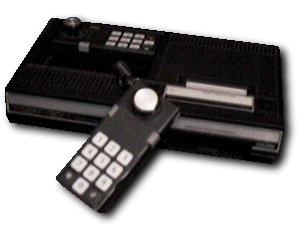

From the ColecoVision FAQ, copyright Joe Huber and James Carter. . .
On June 1, 1982, Coleco re-entered the fray with the announcement of its "third generation" video game system, ColecoVision. Touting "arcade quality", ColecoVision took aim at the seemingly unassailable Atari 2600.
The bulk of Coleco's library, however, was comprised of overlooked coin-op games such as Venture and Lady Bug. With a library of twelve games, and a catalog showing ten more on the way (many of which were never released), the first one million ColecoVisions sold in record time. In 1983 it topped sales charts, beating out Atari and Mattel, with much of its success being contributed to its pack-in, Donkey Kong. The ColecoVision soon had more cartridges than any system except the Atari 2600, and with the 2600 converter still today has more playable games than any other system.
The ColecoVision introduced two new concepts to the home videogame industry - the ability to expand the hardware system, and the ability to play other video game system games. [two such expansions: the never-released Super Game Module and the released Super Action Controllers]
Unfortunately, the ColecoVision suffered the same fate as the rest in the great video game shake-out of 1984. Coleco's unsuccessful bug-ridden ADAM computer only complicated the problem. Some believe if it wasn't for Coleco's Cabbage Patch Dolls, they would have completely disappeared. [end of included information from FAQ] [NOTE: Actually, they did--and Mattel (producers of Intellivision) now own the rights to the Cabbage Patch Dolls--how ironic.]
After the crash, Telegames produced a ColecoVision clone called the Personal Arcade. It's small and uses joypads instead of the ColecoVision stick. The pad has no numeric keypad--that's built into the unit (only one, however, so two-player games requiring the keypad won't work on the Personal Arcade). The Personal Arcade also has an expansion port, but its physical configuration isn't compatible with Coleco's Expansion units.
Dennis Brown, dgbrown (at) pixesthesia (dot) com, creator and maintainer. E-Mail me with corrections and additions. All contents copyright 2006, Dennis Brown. All trademarks are properties of their respective companies.